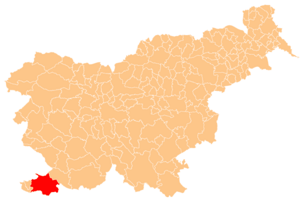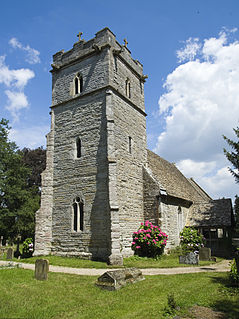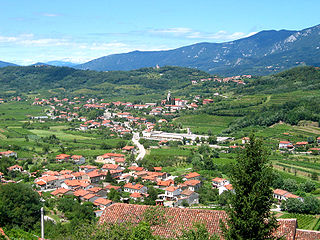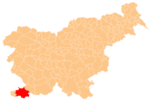| Truške Kortina (until 1955) | |
|---|---|
| Village | |
 | |
| Coordinates: 45°29′41.07″N13°49′25.5″E / 45.4947417°N 13.823750°E Coordinates: 45°29′41.07″N13°49′25.5″E / 45.4947417°N 13.823750°E | |
| Country | |
| Traditional region | Littoral |
| Statistical region | Coastal–Karst |
| Municipality | Koper |
| Area | |
| • Total | 4.28 km2 (1.65 sq mi) |
| Population (2002) | |
| • Total | 47 |
| [1] | |
Truške (pronounced [ˈtɾuːʃkɛ] ) is a village in the City Municipality of Koper in the Littoral region of Slovenia. [2]

A village is a clustered human settlement or community, larger than a hamlet but smaller than a town, with a population ranging from a few hundred to a few thousand. Though villages are often located in rural areas, the term urban village is also applied to certain urban neighborhoods. Villages are normally permanent, with fixed dwellings; however, transient villages can occur. Further, the dwellings of a village are fairly close to one another, not scattered broadly over the landscape, as a dispersed settlement.

The City Municipality of Koper is one of eleven city municipalities of Slovenia. It lies at the coastline of the Adriatic Sea in southwestern Slovenia and was established in 1994. Its centre is the town of Koper. The area has been since 1995 included in Coastal–Karst Statistical Region. The municipality is bilingual.

Slovenia, officially the Republic of Slovenia, is a sovereign state located in southern Central Europe at a crossroads of important European cultural and trade routes. It is bordered by Italy to the west, Austria to the north, Hungary to the northeast, Croatia to the southeast, and the Adriatic Sea to the southwest. It covers 20,273 square kilometers (7,827 sq mi) and has a population of 2.07 million. One of the successor states of the former Yugoslavia, Slovenia is a parliamentary republic and a member of the United Nations, of the European Union, and of NATO. The capital and largest city is Ljubljana.
















